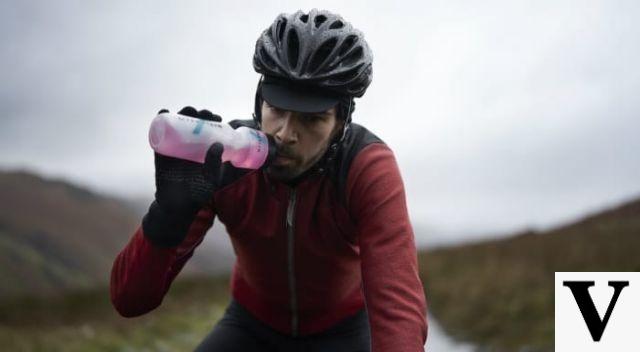By the healthiergang writer , student in Exercise, Sport and Health Sciences.
Have you ever thought why so many professional bikers train at altitude? Have you ever wondered what are the benefits? Who knows how many times you have perceived nausea, tachycardia, migraine, exhaustion, even only during the ski week, or by taking a simple mountain hike, or that strange feeling of absence of oxygen, as if we did not inspire anything with each breath.
In various circumstances you have heard someone tell you “there is less oxygen in the mountains '', or a friend talk about altitude sickness or AMS (acute mountain sickness, slow or almost no ability to acclimatize).

The composition of the air (nitrogen 78% and oxygen 21%) is stable and therefore the same both at sea level and on Everest at 8000 meters, what changes considerably is the partial pressure that every single gas present in the atmosphere exerts on the our body, at high altitudes we will find ourselves in a hypobaric environment (at low atmospheric pressure), all this means that the oxygen pressure is considerably lower at altitude and consequently the passage of oxygen from the lungs to the blood is quite tiring and therefore from the alveolus to the capillary; the higher we climb, the lower the oxygen partial pressure.
Hemoglobin
In the blood there is a particular protein fundamental for our survival, hemoglobin, able to bind oxygen to itself as if it were a magnet and transport it to all our tissues; at high altitudes where the partial pressure of oxygen is lower, it will be able to bind less and consequently hypoxia, or the lack of oxygen in the tissues; It is here that our perfect machine, our organism, will activate some incredible adaptation mechanisms.
Going up in altitude, the first short-term effects that can be seen will be hyperventilation, an increase in heart rate and an increase in cardiac output; all to cope with the lack of oxygen. A myriad of them will follow, but one will be almost brilliant.
An almost immediate response to the poor supply of oxygen, it is thought after about 15 hours of exposure at altitude above 2500 meters, is the production of a hormone, erythropoietin or better known in the world of doping at the end of the 90s as epo ; produced by the kidney due to the scarce supply of oxygen, this substance is able to stimulate the stem cells of the bone marrow to produce red blood cells, this mechanism called polycythemia is the most significant long-term advantage for sports performance.
The advantages
I remember that hemoglobin is found inside red blood cells, therefore an increase in the latter leads to an increase in the concentration of hemoglobin and therefore a better oxygen transport capacity by the blood, therefore a better and faster oxygenation of fabrics.
This situation of polyglobulia will persist as long as we are at high altitude.
This will result in an increase in hematocrit (percentage of red blood cells present in the blood) up to 3/5% in some individuals for about 20/30 days and then stabilize (in fact it is almost useless to stay more at altitude) an expansion of muscle capillarization with consequent net increase in blood flow to the muscles, increase in mitochondria and therefore greater production of energy (ATP), increase of some enzymes of the aerobic pathway, of the basal metabolism, and in some cases a decrease in appetite.
But how long does it take to get these benefits?
For a normal subject it takes an average of 8/15 days for acclimatization, so it is sometimes useless to state that I go a weekend at 3500 meters to correct a bad season; the first increases in hematocrit occur only after about 7 days!
Bike Training
The bike jobs that we can do are different but are adjusted according to the altitude; remembering before having reached a good acclimatization in order not to run into unpleasant, even quite serious, inconveniences such as pulmonary edema, cerebral edema or even heart attack.
- Up to 1200 meters we only perform aerobic strength and power exercises with work around 70/80 pedaling per minute at 60-70% HR.
- Up to 1400 meters you work at an anaerobic threshold with a cadence of 80/90 pedaling at about 80% HR.
- Between 1400 m and 2400 m slow ground work therefore recovery work at 55% FC.
- Between 2400 meters and 3500 meters we go no further than our average pace.
- Over 4000/5000 meters if we could pedal discreetly we would no longer be human beings !!!
But how long do the benefits of acclimatization last?
Red blood cells live on average about 90 days before being destroyed in the spleen so this sort of `` natural doping '' should last 3 months but it is not so because at high altitude we will not replace all our red blood cells but we will produce new ones , it follows a duration of these adaptations or advantages at sea level of about 14/21 days.
Our articles should be used for informational and educational purposes only and are not intended to be taken as medical advice. If you are concerned, consult a health professional before taking dietary supplements or making major changes to your diet.


























